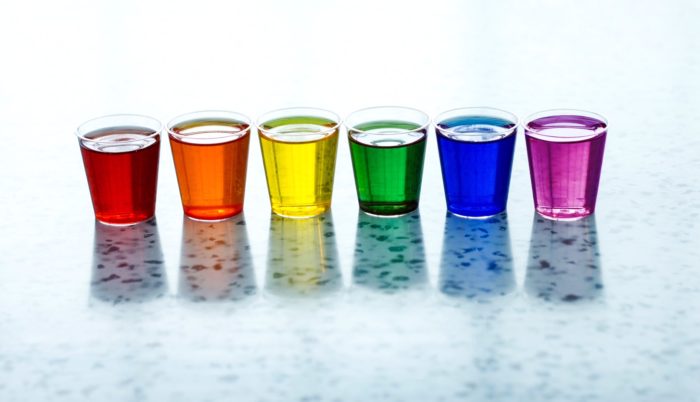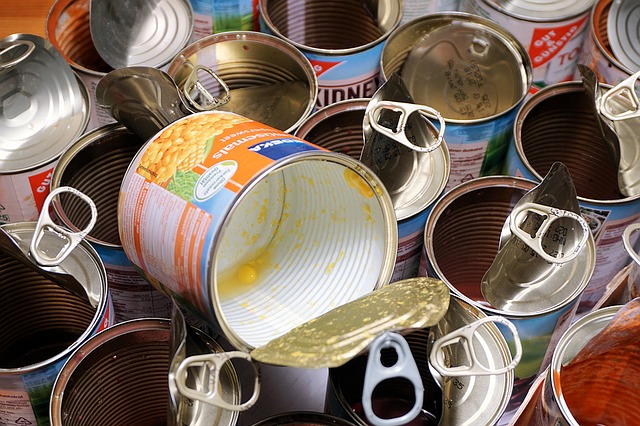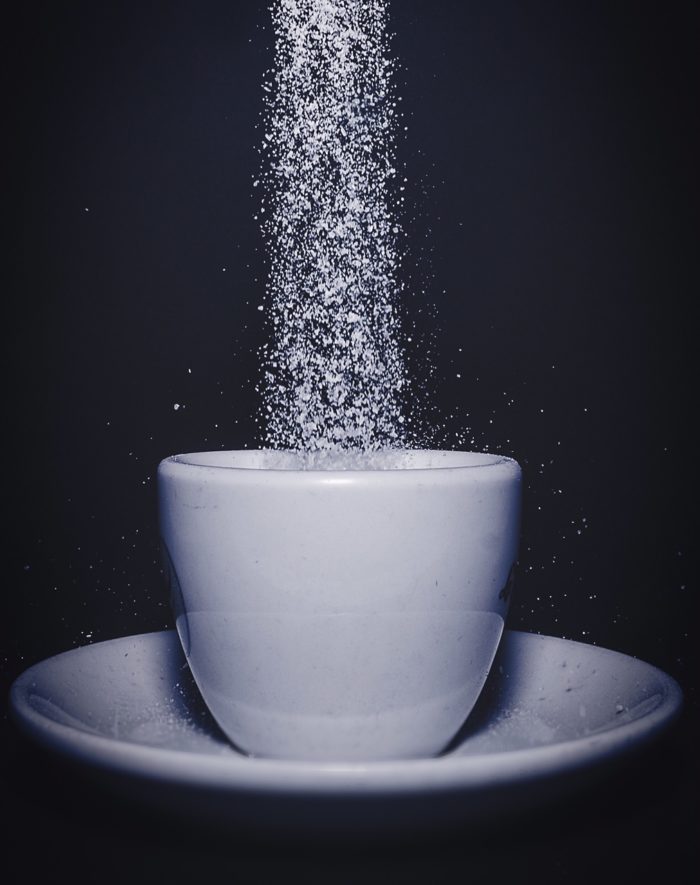Have you ever looked at an ingredients label and been utterly confused? With words like ammonium, chloride, and other questionable terms, ingredient labels can be quite disconcerting. After all, how healthy can an ingredient be if it sounds like it would be better suited for warding off a tough mildew stain?
Each day, thousands of chemicals are used to produce the very food we eat. Unfortunately, unless you eat a diet consisting of all organic, non-GMO, and chemically unprocessed foods, chances are you’ve likely crossed paths with—and ingested—many of them. Regardless of the health implications they may pose, many of these chemicals are labeled “generally recognized as safe,” or GRAS, with little oversight by the U.S. Food and Drug Administration. When it comes to the food you eat—generally safe doesn’t really seem like the best option. If you’re looking to cut some of these unnatural chemicals from your diet—we’ve got you covered!
Artificial Food Dyes to Avoid

Artificial food dyes are typically used in food products to make them more visually appealing. The U.S. Food and Drug Association (FDA) has approved their use in foods—as well as cosmetics, vitamins, supplements, and medications—and deemed them relatively safe; however, studies have shown that artificial food coloring is linked to behavioral issues in children, allergic reactions, and even tumor growths. These offenders include: Blue 1 (Brilliant Blue), Blue 2 (Indigo Carmine), Green 3 (Fast Green), Red 3 (Erythrosine), Red 40 (Allura Red), Yellow 5 (Tartrazine), and Yellow 6 (Sunset Yellow).
If you’re looking to add a pop of color to your baked goods and other food products, there are many natural ingredients you can use to color your foods. Skip the harmful chemicals and try making your own non-toxic food dyes at home!
Food Additives and Preservatives to Avoid

Artificial food dyes aren’t the only culprits you need to watch out for. Harmful chemicals can also take the form of additives and preservatives that are used to maintain food. Chemical food additives and preservatives are high on the list of dangerous chemicals and are typically used to enhance the appearance and taste of foods as well as extend their overall shelf life. Here are 7 additives you may want to avoid.
Ammonium sulfate – Yes, the same chemical used in a variety of lawn fertilizers is also used as a preservative in bread. Ammonium sulfate, made by adding ammonia to sulfuric acid, has been known to cause gastrointestinal and respiratory issues if consumed in large quantities.
Butyl hydroxyanisole (BHA) and Butyl hydroxytoluene (BHT) – If an ingredient sounds scary, chances are it probably is! BHT is a common ingredient in embalming fluid and jet fuel—tasty, right? BHA and BHT are found in a slew of food products (cereals, snacks, and gums) and are chemical preservatives that are used to prevent oils and fats in products from going bad. Although the FDA has deemed them “generally recognized as safe,” The International Agency for Research on Cancer has classified BHA as potentially carcinogenic, while BHT has been shown to stimulate tumor growth—all possible reasons why Japan has banned these substances in foods altogether.
Monosodium glutamate (MSG) – You may be familiar with this food additive. Commonly used in canned foods such as soups and vegetables, MSG is a flavor enhancer which, similar to BHA and BHT, is “generally recognized as safe” by the FDA. Unfortunately, generally doesn’t extend too far here as MSG has been shown to cause adverse reactions such as chest pains, nausea, and headaches.
Propyl paraben – You may have seen this ingredient (or one similar) in cosmetics, but this preservative is also used to keep mold at bay in many baked goods, beverages, and snack foods. The fact that this chemical is banned altogether in Europe is quite telling! Propyl paraben has been shown to accelerate breast cancer cells, disrupt fertility in women, impair endocrine functions, and can also cause allergies.
Propyl gallate – Propyl gallate, a popular food additive, is also found in many cosmetic products and is used in food items to keep them from going bad. Consuming this chemical has been known to cause a slew of health issues such as stomach pains, allergic reactions, as well as liver damage. To make matters worse, propyl gallate is often used alongside BHA and BHT in order to improve its effectiveness.
Sodium benzoate – If you think your jar of pickles is safe from these harmful preservatives—think again! Sodium benzoate, a combination of sodium hydroxide and benzoic acid, has been shown to negatively impact human DNA. Studies also show links between this chemical and its ability to aggravate behavioral disorders such as ADHD and hyperactivity in children.
Artificial Sweeteners to Avoid

Another way to minimize your contact with toxic ingredients—other than skipping processed foods altogether—is to reduce your use of artificial sweeteners. Luckily, there are many ways you can naturally sweeten your baked goods, teas, and other food items, so ditch these three artificial sweeteners today!
Aspartame – You may want to reconsider picking up a packet of Equal or NutraSweet because its main ingredient, aspartame, may pose many health concerns. This artificial sweetener, which is found in many food and beverage products, may aggravate mood swings and can also cause seizures.
Saccharin – The tiny pink packet of zero-calorie, sugary-like goodness otherwise known as Sweet’N Low may seem like a terrific alternative to sugar but its main ingredient, saccharin, is made from coal tar. If that doesn’t sound unappetizing enough, saccharin can lead to many allergic reactions such as headaches and rashes.
Sucralose – Otherwise known as Splenda, sucralose is another popular zero-calorie alternative to sugar. Unfortunately, similar to the other two artificial sweeteners, sucralose can disrupt sugar metabolism within the body and can also cause swelling of the kidneys and liver.
Have you come across any of these chemicals in your favorite foods?
Also by Audrey: 9 Irresistible Gluten Free Dairy Free Desserts & Life Was Not The Same Ever Again
Related: Are You Exposed to Acrylamide in Food?
6 Healthy Foods that Might Be Causing Your Weight Gain
Get more like this—Subscribe to our daily inspirational newsletter for exclusive content!
__




